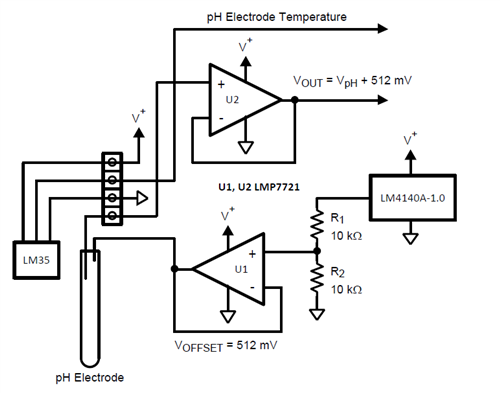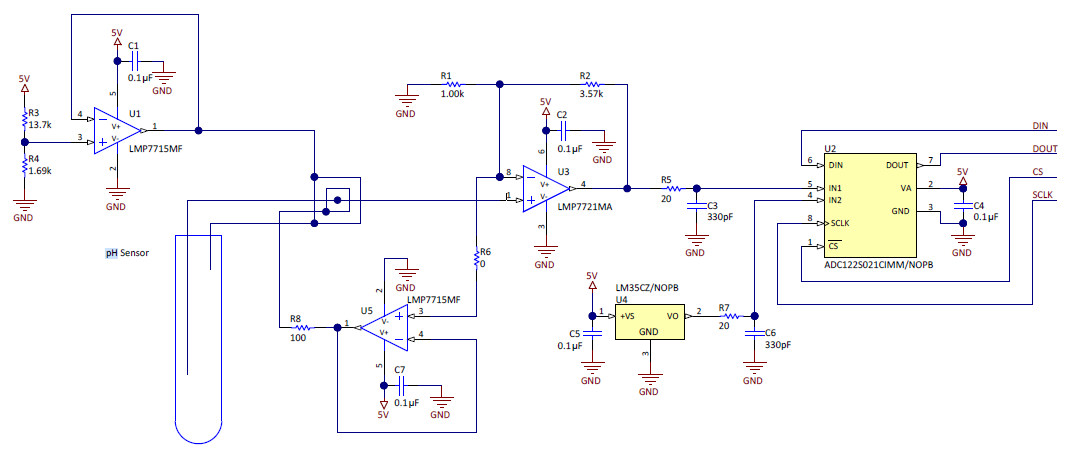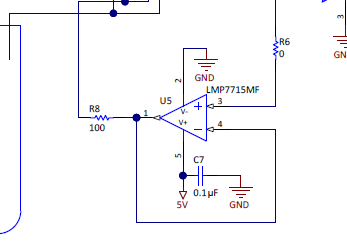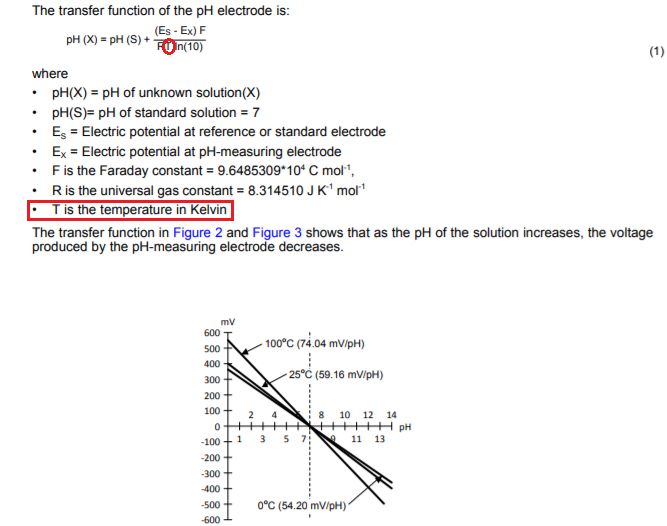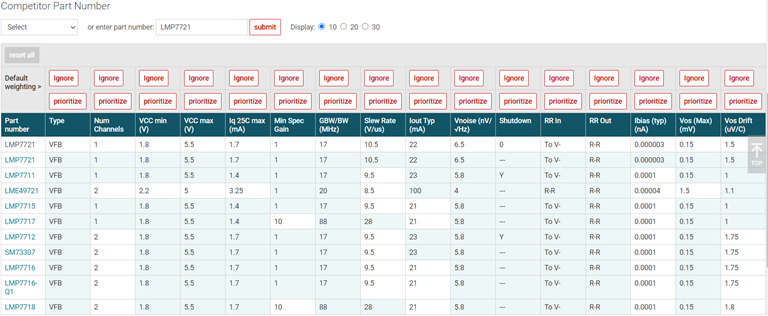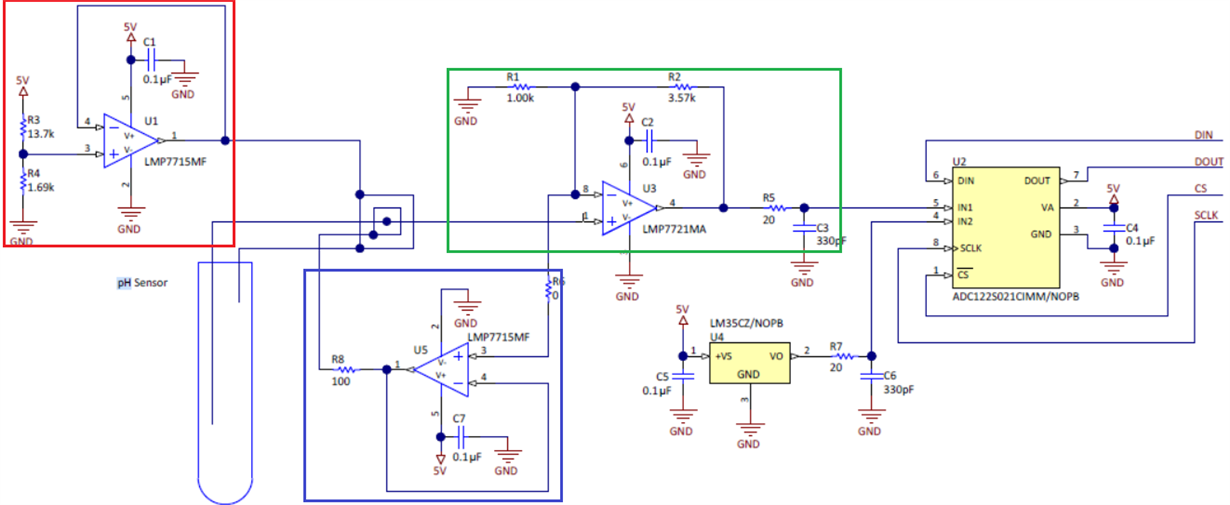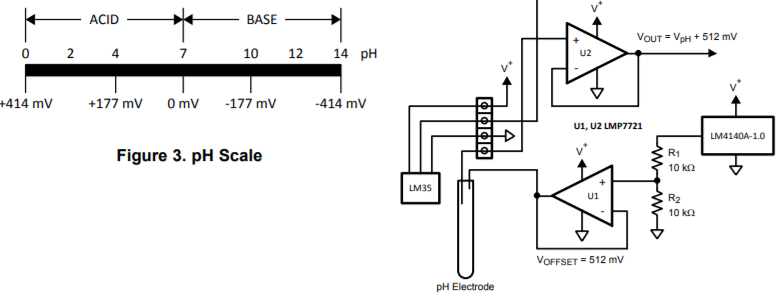Other Parts Discussed in Thread: LMP7715, LM4140, LMP7716, LMP91200
Dear forum members,
I am designing a pH/ORP interface from -1500 to + 1500 mV with a three wire PT-1000 input.
I did a lot of research last week and decided to use the approach as can be seen in AN-1852 for the pH part of the circuit.
Circuit 1:
However, during the design process I also noticed the following circuit (TI CircuitCookbook ADCs):
Circuit 2:
This circuit uses a similar approach, the only differences are that the second LMP7721 is replaced with a LMP7715 which significantly reduces the cost price of the BOM and an additional LMP7715 with unknown functionality (at least for me):
The following website also designed a PCB according to the CircuitsCookbook ADCs example:
PDF Circuit: /cfs-file/__key/communityserver-discussions-components-files/14/ORP_5F00_FRONTENT_5F00_ESP8266.pdf
Questions:
1. Why does circuit 1 use 2x LMP 7721 and circuit 2 only one? I know that this is possible to reduce costs because the LMP7721 is quite expansive, but what is the advantage of using the LMP7721 to generate the offset voltage compare to using the LMP7715?
2. In circuit 2, what is the use of the second LMP7715 and what are the benefits (also compare to circuit 1)
3. Which circuit would you recommend considering a noisy environment (e.g. in a factory with 3-phase big pumps)?
4. Do you think that by selecting the correct voltage regulator (LM4140) a measuring range from -1500 to + 1500 mV can be achieved?
5. The German site uses LMP7716 instead of LMP7715, what can be a reason to select this component (besides the price).
6. Is it ok to upload the schematics so you can give feedback?
Thanks a lot and best regards,
Ben


